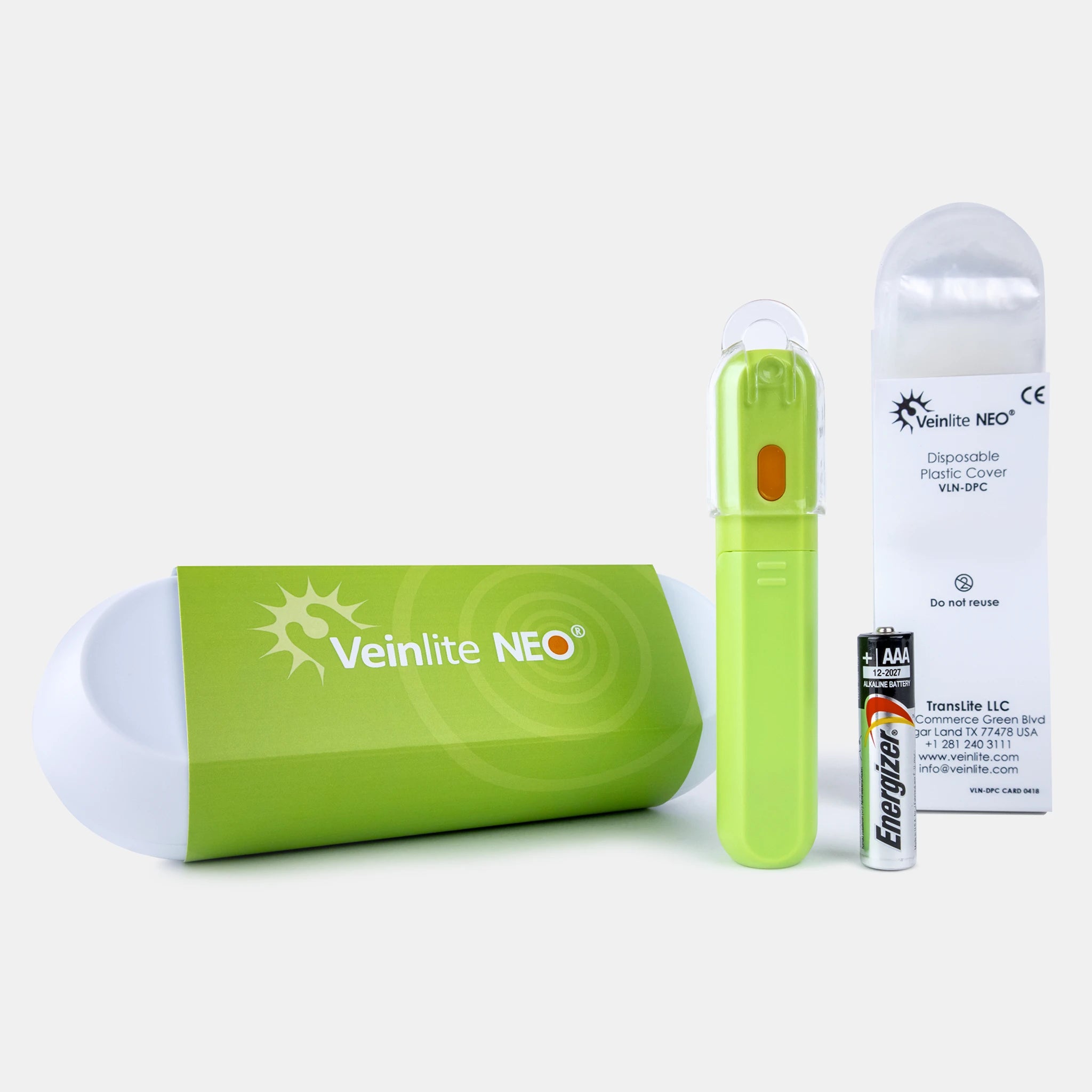





Veinlite NEO®
VNEO
FOR NEONATES
Veinlite NEO is a clinically proven neonatal vein finder designed for use on newborns and infants (under 8 weeks). With its unique combination of through-the-body transillumination, adjustable color, and light settings, Veinlite NEO is the ideal tool for providing venous access in the NICU. Its compact design makes it easy to hold and use on even the smallest of neonatal patients. By helping healthcare professionals quickly locate veins and arteries in neonates, Veinlite NEO can help reduce the time it takes to perform difficult IV insertions.
Veinlite NEO is the ideal solution for vein and arterial sticks in newborns.
Pairs well with
In stock! Ships within 1-2 business days.
30-day risk-free trial
FREE 5-Year Extended Warranty

Veinlite NEO®
If you have any questions, you are always welcome to contact us. We'll get back to you as soon as possible, within 24 hours on weekdays.
-
Shipping Information
Use this text to answer questions in as much detail as possible for your customers.
-
Customer Support
Use this text to answer questions in as much detail as possible for your customers.
-
FAQ’s
Use this text to answer questions in as much detail as possible for your customers.
-
Contact Us
Use this text to answer questions in as much detail as possible for your customers.

What's in the NEO Kit?
FAQs
Please read our FAQs page to find out more.